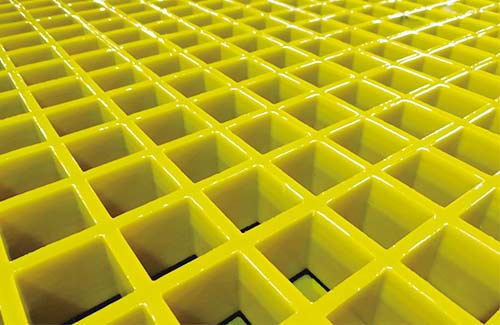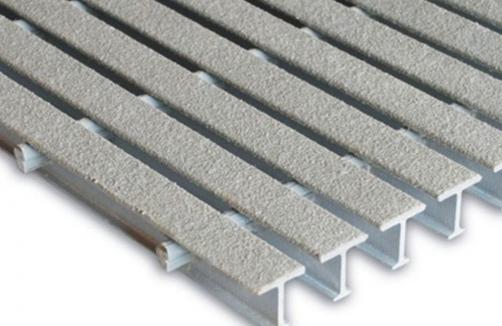Pultruded FRP Grating: La guía definitiva para aplicaciones industriales
Are you looking for a durable, corrosion-resistant, and cost-effective solution for your industrial flooring needs? Pultruded FRP (Fiberglass Reinforced Plastic) grating might be the answer you’ve been searching for. This comprehensive guide will explore everything you need to know about pultruded FRP grating, its benefits, applications, and why it stands out as the ultimate choice for industrial environments.
What Is Pultruded FRP Grating?

Pultruded FRP grating is a type of composite material made from fiberglass reinforcement and a polymer matrix, typically polyester or vinylester resin. The process involves pulling the fiberglass roving through a die head, where it is impregnated with resin and cured under heat, resulting in a strong, rigid, and lightweight material. This method ensures uniformity and consistency in the final product.
Cuestiones clave
- How Does Pultruded FRP Grating Compare to Traditional Materials?
- What Are the Main Benefits of Using FRP Grating in Industrial Applications?
- How Is Pultruded FRP Grating Installed and Maintained?
- What Industries Benefit Most from Using FRP Grating?
Benefits of Pultruded FRP Grating
Durability and Corrosion Resistance
One of the primary advantages of pultruded FRP grating is its exceptional durability and resistance to corrosion. Unlike traditional materials such as steel, which can rust when exposed to moisture and chemicals, FRP grating remains unaffected. This makes it ideal for environments where harsh chemicals, saltwater, or extreme weather conditions are present.
Lightweight and High-Strength
FRP grating is significantly lighter than steel while maintaining high strength. This makes it easier to handle, transport, and install, reducing labor costs and minimizing the risk of accidents during the installation process. Additionally, its lightweight nature allows for the creation of long spans without the need for additional support structures.
Electrical Non-Conductivity
Another significant benefit of FRP grating is its electrical non-conductivity. This property makes it a safe choice for environments where the risk of electrical hazards is high, such as near electrical panels or in areas with overhead power lines.
Relación coste-eficacia
While the initial cost of FRP grating may be higher than some traditional materials, its long-term benefits make it a cost-effective solution. FRP grating requires minimal maintenance, has a long service life, and does not corrode, reducing the need for frequent replacements and repairs.
Applications of Pultruded FRP Grating
FRP grating is versatile and can be used in a wide range of industrial applications. Some of the most common uses include:
- Cubiertas de puentes: FRP grating provides a strong and durable surface for bridge decks, reducing the risk of corrosion and extending the bridge’s lifespan.
- Platform Decking: Industrial platforms benefit from FRP grating’s lightweight and high-strength properties, making it easier to install and maintain.
- Aplicaciones marinas: The corrosion resistance of FRP grating makes it ideal for use in marine environments, such as docks, piers, and boat decks.
- Plantas químicas: FRP grating’s resistance to harsh chemicals makes it a safe and reliable choice for chemical plants and industrial facilities handling corrosive substances.
Installation and Maintenance
Proceso de instalación
Installing pultruded FRP grating is relatively straightforward. The process typically involves the following steps:
- Preparación: Clear the area and ensure it is level and free of debris.
- Placement: Carefully place the FRP grating panels in the desired location.
- Securing: Use appropriate fasteners to secure the grating to the underlying support structure.
- Finishing: Add any necessary skirting or edge protection to ensure safety and stability.
Requisitos de mantenimiento
FRP grating requires minimal maintenance compared to traditional materials. Regular inspections are recommended to check for any signs of wear or damage. Cleaning can be done with mild soap and water, and any minor cracks or damage can be repaired using FRP-specific repair kits.
Conclusión
Pultruded FRP grating offers a multitude of benefits that make it the ultimate choice for industrial applications. Its durability, corrosion resistance, lightweight nature, and cost-effectiveness make it a versatile and reliable solution for a wide range of industries. If you are looking for a long-lasting and low-maintenance flooring option, pultruded FRP grating is definitely worth considering.
Share This Guide: If you found this guide helpful, feel free to share it with your colleagues, friends, or anyone else who might benefit from this information. Together, we can spread the word about the incredible advantages of pultruded FRP grating!
By choosing pultruded FRP grating, you are investing in a solution that will not only meet but exceed your industrial flooring needs, providing safety, durability, and peace of mind for years to come.







